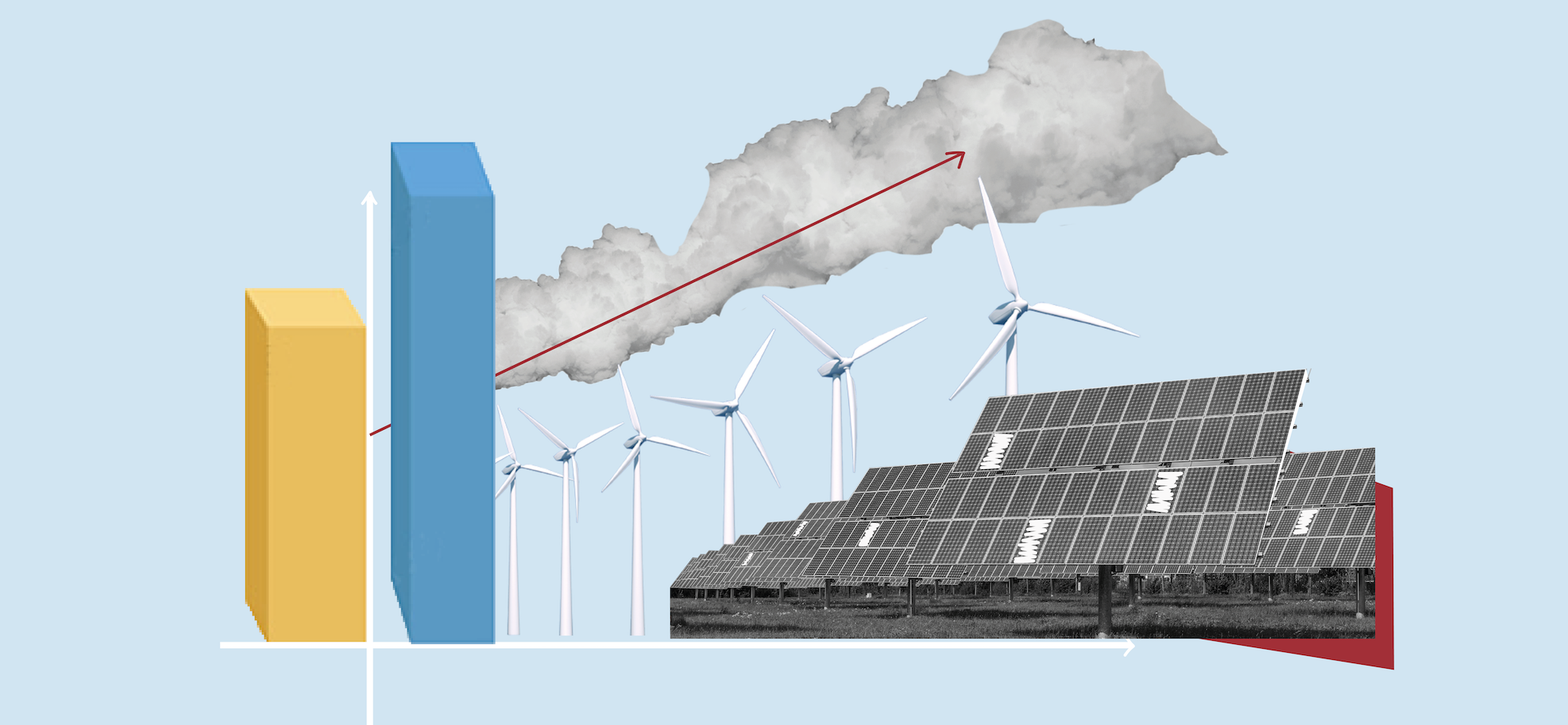
Over the past few decades, concerns regarding climate change and its consequences have become one of the main drivers of energy policy in much of the developed world. However, the war in Ukraine has shifted the immediate priorities of European economies away from the environment to energy security. For example, Germany has decided to turn on its coal-powered generation. Nonetheless, in the long term, the decarbonization of the European energy mix is well-aligned with its goal of reducing dependence on imported Russian gas.
Similar developments are taking place in Armenia, though in a somewhat reverse order. The energy deficit of the 1990s still lingers in the memory of the Armenian people, as do ongoing national security concerns. As a result, climate change and environmental issues may take the back seat for the Armenian public. At the same time, improvements in low-carbon technologies, driven in part by foreign energy policy, have created new opportunities for a country without fossil fuel reserves. This has made environmental concerns and the pursuit of higher energy security even more aligned than before. Ultimately, it is public opinion around these issues that will exert pressure on decision-makers to act. Against this backdrop, the Westminster Foundation for Democracy conducted a survey of public opinion on climate change and renewable energy in Armenia in December 2022.
The first half of the survey focuses on the public’s attitudes towards the environment and climate change. The majority of respondents have heard about climate change and are at least somewhat concerned about it. A slightly smaller majority considers it to be an important issue for Armenia. While just over half of the respondents believe that climate change is caused by human activity, almost everyone agrees that it is important to take steps to prevent climate change or reduce its impact in Armenia. This likely demonstrates public support for adaptation measures. However, it is worth noting that the two most significant environmental issues for Armenians are local problems: deforestation (65%) and air pollution (63%).
An interesting result of the survey is that half of the respondents strongly disapprove of harming the environment, even if it brings economic benefits to the country. Furthermore, 47% of the respondents believe that there are ways to achieve economic prosperity without harming the environment. In reality, it is unlikely that any human activity can cause zero harm to the environment. However, the extent and type of damage can vary. For example, generation of electricity can have a negative environmental impact, either directly, such as through CO2 emissions from fossil fuels, or indirectly, such as the end-of-life impact of solar panels.
From an economic perspective, what matters is the marginal cost to the environment. This refers to the cost of an additional unit of pollution compared to the benefits derived from it. Ideal regulations result in pollution levels where the marginal cost of human activity equals the marginal benefit gained from that activity. There is also a concept called the Environmental Kuznets Curve, which suggests that as an economy develops and individuals can afford to worry about the environment, pollution levels will eventually decrease.
It is possible that Armenia is approaching that critical point on the Kuznets curve at which environmental concerns are increasingly prioritized, at least for some forms of environmental degradation. However, survey results should be viewed with some skepticism. Individuals’ stated preferences may differ from their actual values as revealed by their actions and choices –– a concept known as “revealed preferences” and developed by economist Paul Samuelson. Armenians may have been concerned about deforestation in the 1990s, but this probably would not have prevented such a large volume of trees from being cut down to provide heating during an energy crisis.
The most striking result of the survey was related to national energy security. When asked about steps to ensure Armenia’s energy security, only 16% of respondents listed the construction of a new nuclear power plant among their top two priorities. This is in contrast to both past and present governments’ consideration of building a new nuclear power plant once the Metsamor Nuclear Power Plant (NPP) is decommissioned. Such a project would last a decade and cost billions of dollars. This discrepancy between the public’s and officials’ perception of nuclear power is a strong signal for the need to hold discussions and raise awareness about this issue.
The role of nuclear energy in Armenia’s energy security is complex, with both risks and benefits. The environmental damage caused by radiation and waste mismanagement can be reduced by building a new power plant with higher standards and stricter regulatory oversight. However, the threat of earthquakes and possible damage to the power plant looms large, especially after the Fukushima disaster and the recent earthquake in Turkey.
On the other hand, Armenia’s limited hydropower reserves mean that natural gas –– an option with its own geopolitical risks and a higher dependence on imports –– is the only viable alternative to nuclear power for generating baseload electricity. Additionally, nuclear power in Armenia has its own environmental benefits, as constructing and later restarting the NPP helped relieve the pressure on hydropower resources and the water levels of Lake Sevan.
The Metsamor NPP is set to be decommissioned by 2036, so the construction of a new plant will need to begin within the next 2-3 years. This makes public dialogue on the matter all the more urgent.
While the survey results demonstrate relatively little support for nuclear power, there is much stronger approval for renewable energy, such as wind and solar. According to the report, 71% of respondents agree that the development of these sources of energy is important for energy security. Additionally, 62% support providing financial assistance to citizens who install such systems, and 34% have indicated that they would switch to renewable energy in the event of financial opportunities. One hopes that these two categories are not mutually exclusive!
Another interesting observation is that, despite the Armenian government and parliament bearing most responsibility for energy security in the eyes of the public, they are not seen as the bodies that have in fact contributed to it the most. The opportunity nonetheless remains for political parties to capitalize on the public demand, as the majority of respondents would support a political party if it develops renewable energy in their communities and creates jobs for protecting the environment. Unfortunately, wind and solar are grouped together in the survey, not allowing to differentiate the preference for one or the other. A lack of experience with wind turbines in Armenian communities may contribute to false expectations; in many countries, for example in Switzerland, wind power often faces opposition by local communities despite being viewed favorably in general. On the other hand, Armenians have experience with hydropower plants and the nuisance they can create, which may explain why the support for local hydropower is relatively less than for wind and solar.
On a more positive note, the vast majority of respondents reported that they turn off water taps and lights when not needed. Additionally, nine out of ten use energy-saving lamps. While environmental concerns may play a role, the fact that such practices are widespread is primarily due to our own wallets being involved. Therein lies the risk of governmental support for environmental causes. It’s much easier to spend someone else’s money –– as government spending can often be perceived –– especially when the benefits are received directly, as, for example, is the case with subsidies for solar panels.
The argument here is not for or against any particular environmental regulatory scheme, but rather about the principles involved. Public support for the environment and energy security must be distinguished from the desire of an individual to benefit at the expense of taxpayers as a whole. This distinction can become muddled in public opinion surveys. Ultimately, any society has a limited amount of resources, whether allocated through private, market arrangements or through governmental schemes.
The real challenge facing Armenian society is not to install a certain number of solar panels or to remove a certain amount of waste. Rather, it is to develop processes and institutions that incentivize or discourage certain activities in full concordance with their environmental costs or benefits.
From our Magazine Issues
Also see
Struggling to Breathe: Public Transportation and the Air Pollution Crisis
The vast majority of air pollution in Armenian cities is from transport emissions, and both the concentration and quantity of automobiles in Yerevan prevent residents from living in an environment with clean air.
Read moreThe Nuclear Option
Armenia’s Nuclear Power Plant in Metsamor is vital for Armenia’s energy security; it also poses dangers that are often overlooked. While the focus has been its location, less public scrutiny has been paid to its ongoing environmental impact.
Read moreModern Challenges of a Capital City
Climate change is a major global challenge impacting all aspects of life on the planet. Polar ice and glaciers are melting, sea levels are rising, while some regions are experiencing unprecedented precipitation and extreme weather events such as heat waves and droughts. Climate change is not something that will happen in the future; it is already happening and if not mitigated, will cause starvation and mass displacement on a global level. Armenia is recognized as vulnerable to climate change impacts due to a combination of political, geographic and social factors. This month’s magazine issue entitled “Climate Change” features articles that look at Armenia’s vulnerability to climate impacts; how accumulation of waste can contaminate soil, water, air and other systems and cycles that regulate the climate and the importance of alternative potential energy sources.
See the full Magazine Issue here
Water is a source of renewal, purification and regeneration. It is essential for all forms of life. Humans wouldn’t be able to survive for more than three days without it. Today, over 2 billion people across the world experience high water stress. Today, nearly one-sixth of the world population does not have access to potable water, one-third cannot afford to use water for their household needs, more than 1 billion people use less than six liters of water per day and another 4 million people die each year from water related diseases.
These facts underscore water’s importance across key development issues and highlight the need of placing water and its responsible use at the core of sustainable development. These facts are also concerning for Armenia, considering how the issues of water scarcity and water security will potentially compound the already-complex problems facing the South Caucasus.
This magazine issue, entitled “Water,” you can find articles on water security, the challenges of irrigation for Armenian farmers, the threat facing Lake Sevan and how water is the source of ancient Armenian traditions.
See full Magazine Issue here










